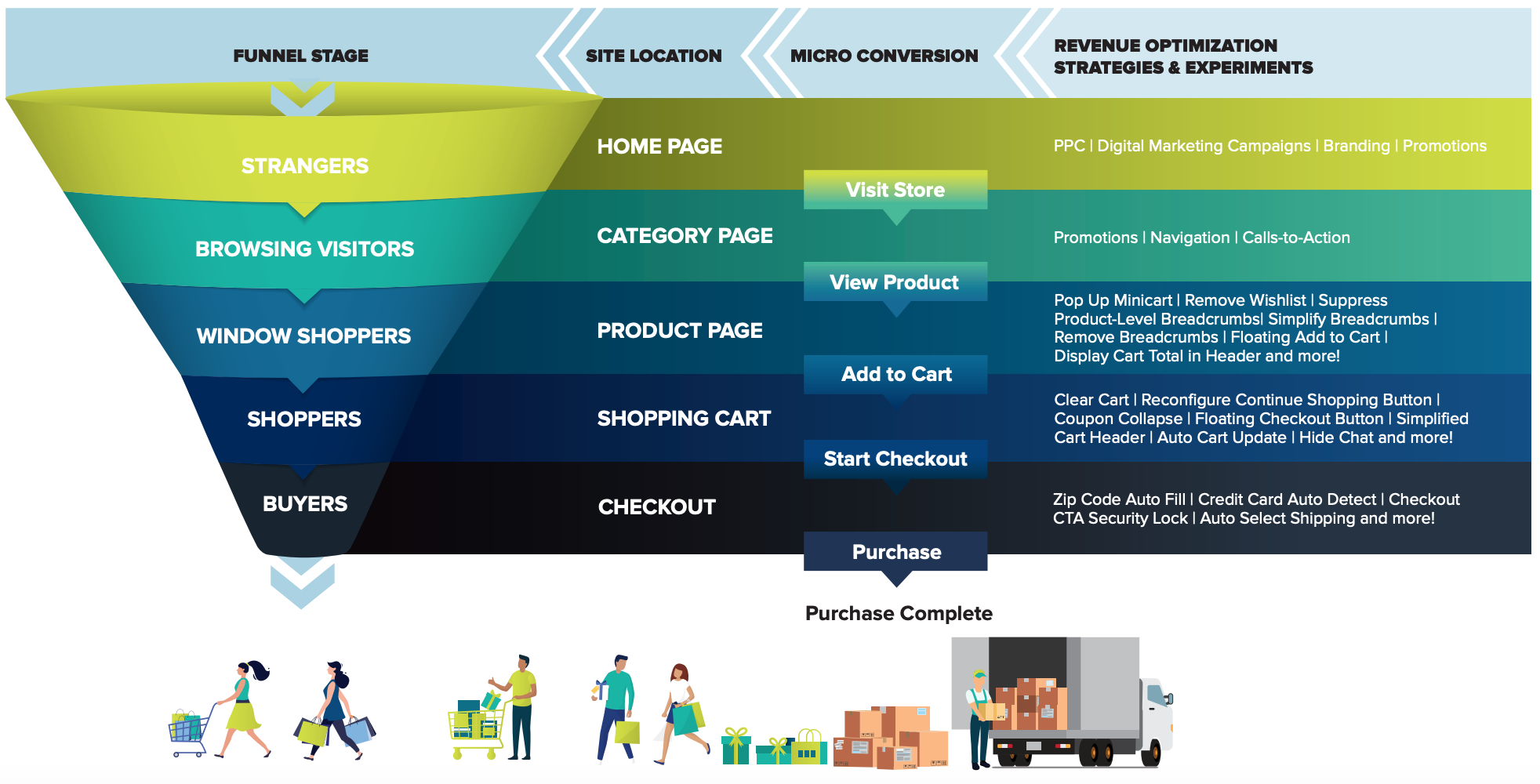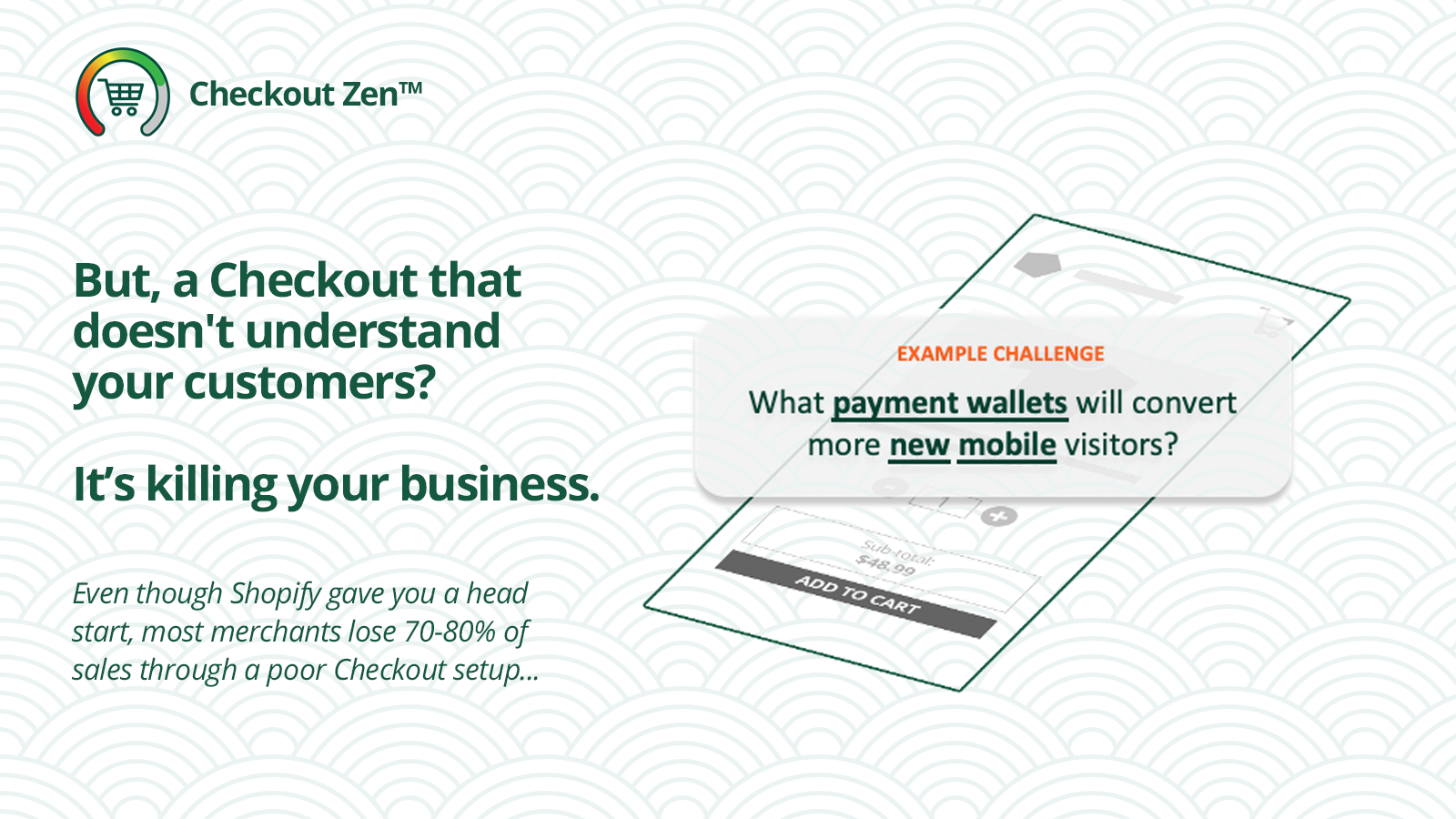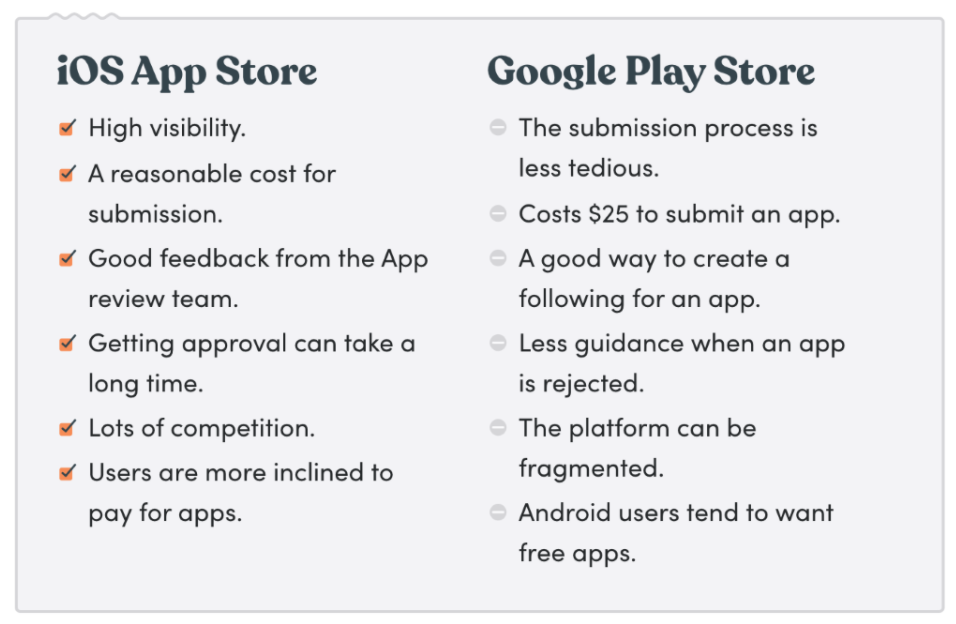Why Checkout Experience is Important to Shopify [Plus Where It’s Going in the Future]

Entrepreneurs and small merchants love Shopify because it makes growing an online business easier than ever. Larger brands turn to Shopify Plus to help them adapt to changes in retail and reach more customers. But what role does checkout play for the future of these platforms?
Shopify’s smart branding, networking, and positioning has established them as the ‘cool kids’ on the block, making it easy to forget that they share the market with big names like Adobe and Salesforce [1].
To find out why Shopify really resonates with merchants, we spent a lot of time talking to eCommerce teams this year about what they like on the platform, what they don’t, and what they want to see in the near future.
Shopify is a BEAST!
The company, the stock, and the website builder is the future.
— Jennifer Danielle (@JennDanielle1) July 29, 2020
This got us thinking about their strategy of leveling the playing field in eCommerce, and helping smaller brands thrive – what merchants aren’t thinking about may be the key to faster, more efficient growth.
This idea drove us to investigate checkout, payments, and some other areas Shopify is exploring that may determine the future of the platform and its success.
The Shopify business model is twofold: one revenue stream is a subscription service while the other is what they call ‘merchant solutions’, or additional services offered on top of the platform. Subscriptions are the core of the business, but the merchant solutions actually drive over 50% of the company’s revenues.
What’s the secret? Shopify gets a cut of every transaction made with these extra services. Let’s take Shopify Payments, for example (which two thirds of its merchants have enabled, by the way). If the platform generated $319 billion between 2016 and 2019 and currently has over a million users, just imagine how many payments occur per day.
This is why checkout performance is so important to Shopify – the more customers successfully complete their purchases, the more the platform will grow. Its future depends on it.
How does Shopify Payments give merchants the advantage?
Accelerated checkouts have been around for a while, and they’ve certainly proven to be valuable, but the same can’t be said about their ease of configuration.
Enter Shopify Payments.
Shopify Payments is a streamlined payment process, that simplifies the administration of payments. It enables merchants to deal with just one payment service provider instead of the many provider as was the case previously. With Shopify Payments, merchants can automatically accept all major payment methods. [2]
The more merchants know about how their customers like to pay, the better they can serve them. More convenience equals faster, more efficient checkouts. Better checkouts mean higher conversion rates, improved cart abandonment, and most importantly, revenue that builds without a significant (often expensive) initial investment.
While Shopify Payments does have its quirks, like limited availability and terms and conditions that have been known to change suddenly, the pros certainly make it worth considering [3]:
- Seamless integration: It all takes place right in your Shopify dashboard. No need to log into another platform to see where your funds are.
- Removes extra transaction fees: This is Shopify’s creative way of making you choose their solution. But it’s a good incentive.
- Can use other payment providers: Using Shopify payments isn’t exclusive, so you can still let users pay through other gateways like PayPal.
Many brands on Shopify don’t have the means to spend on big marketing campaigns or the resources required for complicated integrations, setup, and management of enterprise software.
While it’s hard to argue that peak checkout performance shouldn’t be strived for, it looks like making these improvements will have to be as effortless as possible if Shopify merchants are to (understandably) stay interested.
What does checkout performance mean for Shopify stores?
Speaking of easy integration, this is where the Shopify app store comes in. Much like the iOS App Store or Google Play Store, Shopify’s app marketplace gives merchants access to over 3,000 different apps that can be installed and put to use right away.
Apps are a convenient way to obtain useful insights and help remedy common issues that many stores run into, such as cart abandonment. There are quite a few categories available ranging from store design to reporting to shipping. Users can even choose from apps made by Shopify’s in-house team or third-party developers.
These add-ons can be invaluable for new entrepreneurs and emerging brands.
Shopify leads the pack in providing the support small merchants need to get off the ground, but what might be next for the platform is a focus on sustainable checkout experiences.
What does that mean? Well, let’s first look at why checkout is such a big deal.
“The checkout path directly influences brand perception, propensity for return visits, and an organization’s ability to drive revenue online.” – Anna Kaley, User Experience Specialist, Nielson Norman Group
It may be surprising to some that the most critical moment in a customer’s visit to your site – when they decide whether or not they will buy – has been largely overlooked in the past.
Since the beginning of eCommerce up until fairly recently, most if not all online stores had a ‘set it and forget it’ approach to checkout. If it was up and collecting payments successfully, the site manager would check that task off their list and move on.
Being the curious minds that we are, we started monitoring the checkouts of our merchants more closely, to find out if having a good or bad checkout experience made any real impact to a sales revenue.
What we discovered was eye-opening.
Some sites were missing out on 15% in new revenue because a chat window was too big, others letting 7% slip away due to lack of an auto cart update message, and the list goes on. So many brands were forgoing new revenue without even knowing it.
During our research, we talked to merchants about what metrics were most important to them and what was missing from their checkout analyses.
Throughout that process, we isolated 5 metrics that we believe have the most impact on checkout success:
- Cart Abandonment
- Checkout Engagement
- Checkout Conversion
- Accelerated Checkout
- Mobile Abandonment Gap
If checkout performance is equally as critical to a large enterprise brand as it is to a small merchant – arguably there is way more at stake for big brands – Shopify will need to further explore how it can help both tackle checkout abandonment and capture a greater share of transacted revenues as their own platform continues to grow.
Why do brands need better checkout experiences?
It’s pretty simple, really – the top 1% of eCommerce stores have excellent checkouts.
The other 99% range from good to…not so good.
While it’s safe to say eCommerce has been growing rapidly year over year (well, in 2020 it exploded!), the evidence shows that it’s still an emerging channel plagued with common problems:
- 62% of site visitors come from mobile but only 23% actually buy anything
- Only 12% of consumers find mobile shopping more convenient than desktop
- 86% of mobile shoppers bail during the checkout phase
Source: The Mobile Optimization Initiative
With $602 billion spent on US eCommerce alone in 2019, the amount of revenue still inaccessible to merchants due to poor checkout management is staggering.

Brands need more effective checkouts so they can serve customers better and retain more of their business. With eCommerce rapidly expanding this year and merchants having to react quickly to the tsunami of new digital shoppers, it’s now critical to have a site that doesn’t underperform on conversions.
Strategically, this is Shopify’s biggest growth opportunity in the history of the platform.
The massive influx of traffic could either mean huge gains or tremendous potential losses. More transactions could be a good thing for Shopify, but how many of these new visitors will make it that far? Let’s say that out of a million new shoppers only half of them actually end up converting – would this align with Shopify’s growth goals?
In order for Shopify to truly capitalize on this opportunity, they might consider further evangelizing merchants to shore-up their checkouts. The first step is figuring out what’s broken.
Where is checkout optimization making most impact for merchants?
According to popular a/b testing tool Optimizely, optimization is the process of using controlled experimentation to improve a website’s ability to drive business goals. We’re introducing this concept here because checkout optimization is how merchants learn what drives their customers to convert.
Why is this knowledge important? Because without it, the success of the customer is left up to chance instead of careful analysis and insight. Without actionable data, eCommerce teams are left guessing as to what’s generating revenue on their sites and what’s keeping visitors from buying (or ever coming back).

Checkout Zen™ – HiConversion’s inaugural Shopify app – helps merchants measure and improve their checkout UX; impacting conversions, sales and revenue.
Through years of working with merchants, we’ve seen all kinds of optimization experiments, but some have shown us that checkout-specific tests can make the biggest difference in conversion rate.
Recently we did a full full analysis on these, but here’s a brief rundown:
- Hiding chat in cart and checkout: Eliminate distractions on cart and checkout pages. Chat is still an important feature on many sites, although merchants should use caution in steps critical to conversions.
- Auto updating carts: Remove manual steps and decrease friction in the checkout process. Be cautious of its impact on returning visitors who are accustomed to a different flow.
- Auto–filling ZIP code: Reduce errors and time required to complete checkout. Testing recommended for forms that do not auto-populate fields based on location.
- Displaying cart totals in the header: Reduce ‘sticker-shock’ when transitioning to the checkout Visitors may be more likely to complete their sale—but with a lower average order value.
- Suppressing product-level breadcrumbs: Reduce visual distractions, especially on sites that may have multi-line breadcrumbs because of a large product catalog or long naming conventions within product categories.
Obviously, websites are very contextual, so it remains crucial for merchants to run their own tests. Still, the data strongly suggests that specific checkout elements are make-or-break when it comes to securing conversions.
Are Shopify apps making (checkout) optimization easier?
Yes – and this is just the beginning.
Merchants generally have 3 options when it comes to optimizing their sites:
- DIY (Apps)
- Agency/Devs (Apps + Services)
- Tech Partners (Strategic)
Fortunately, optimization no longer means expensive, hard to manage software and unpredictable results. Especially with up and coming brands, no one on the team has a minute to spare on a complicated project that may or may not be worth it.
The advantage we’ve found with the app store is that it gives small teams the power to self-diagnose checkout and other steps in their shopping experience without committing significant additional resources. Optimization isn’t one-size-fits-all, and apps provide a bit more flexibility for merchants where some strategies aren’t viable (ex: not having enough traffic for a checkout campaign).
With an extensive library of apps to gain better insight into checkout and boost performance, Shopify has already gotten a head start in the most important driver of long-term growth for not just emerging brands, but all of eCommerce.
So where is all this going? Shopify apps are helping merchants improve their user experiences dramatically on their own – increasing engagement, conversions, and customer retention. Every moment counts because transactions fuel Shopify’s continued growth – without evolving checkouts, the platform’s transactional growth might plateau leading to diminishing returns.
What’s the future looking like for checkout (and the Shopify app store)?
Kurt Elster, a Shopify expert and the host of the Unofficial Shopify Podcast, brought up an interesting point on a recent episode of his show [4}:
“The best part about Shopify is the app ecosystem — the app store. And the worst part about Shopify is the app store. No matter what feature or integration you need, there is probably one or more apps for it. And, likely, they’re all reasonably priced. Some will even be free. But it is easy to get addicted to apps. You start playing app roulette. You think, “If I just get the right one, it’s going to seriously boost my sales.”
Will it really be efficient to run an optimization app for every part of your shopping experience?
The expenses and strain on a site that would inevitably compound point to a definitive no.
Hiring a Shopify expert to figure out which apps provide the most value to a site and which to remove may seem like a logical option, but then again also defeats the purpose of using the apps in the first place.
It’s tough to say exactly where the future of the app store is headed, but we already have some financial analysts positing its current path is potentially unsustainable [5]. Perhaps instead, Shopify apps will need to be powerful enough to optimize entire sections of a site on their own (checkout), rather than focusing on very specific elements or steps (the cart).
In fact, we are already seeing this with the Shopify Plus Certified App program – designed to bring larger solutions to the most demanding merchant problems.
The future of checkout (and the app store) for Shopify and their merchants looks to be a balance of allowing for this broader range while also maintaining the ability to conduct deep dives into eCommerce minutia.
Here’s Lifewire’s comparison [6] of the two most well-known app stores:

After reading about their requirements for public apps [7], it looks like Shopify is leaning more towards Apple’s formula with its multi-stage review process and helpful feedback for developers – (we can talk from experience here, it’s a very sophisticated process).
Being that the App Store generates nearly twice the revenue of the Google Play Store, Shopify seems to have picked a tried-and-tested strategy that will likely continue to drive more merchants to their app marketplace in the coming years.
Closing thoughts on checkout experience and Shopify’s future
We embarked on this journey to learn more about what sets Shopify apart from the giants in the eCommerce platform space and what might determine their success in the future.
Starting with their business model of combining subscriptions with merchant solutions, we examined the platforms growth strategy and attempted to isolate some key factors.
Shopify’s focus on transactions, a critical part of its additional services (where the majority of the company’s revenue comes from) revealed the importance of checkout performance and its role in addressing widespread issues facing online shopping, including:
- Increasing cart abandonment rates
- Subpar mobile experiences
- Low purchase intent behavior (engagement)
- Conversions not keeping pace with increased traffic
Additionally, the platforms app store further supports checkout by providing numerous ways for merchants to address these obstacles on their own and convert more visitors.
But the biggest takeaway from this experience was discovering how crucial each and every visit is to Shopify, and the role checkout optimization will ultimately play in their future growth.
By helping merchants unlock the full potential of their own websites, Shopify could potentially create a compounding source of growth for both the platform and the increasingly large numbers of online brands it serves.
Resources
- https://2pml.com/2020/07/06/cool-kids/
- https://www.conversific.com/blog/shopify-shop-pay-shopify-payments/
- https://www.websitetooltester.com/en/blog/shopify-payments/
- https://www.practicalecommerce.com/shopifys-app-store-is-good-and-bad-says-unofficial-expert
- https://seekingalpha.com/article/4357251-shopify-getting-ahead-of-skis
- https://www.lifewire.com/ios-app-store-vs-google-play-store-for-app-developers-2373130
- https://www.lifewire.com/ios-app-store-vs-google-play-store-for-app-developers-2373130



